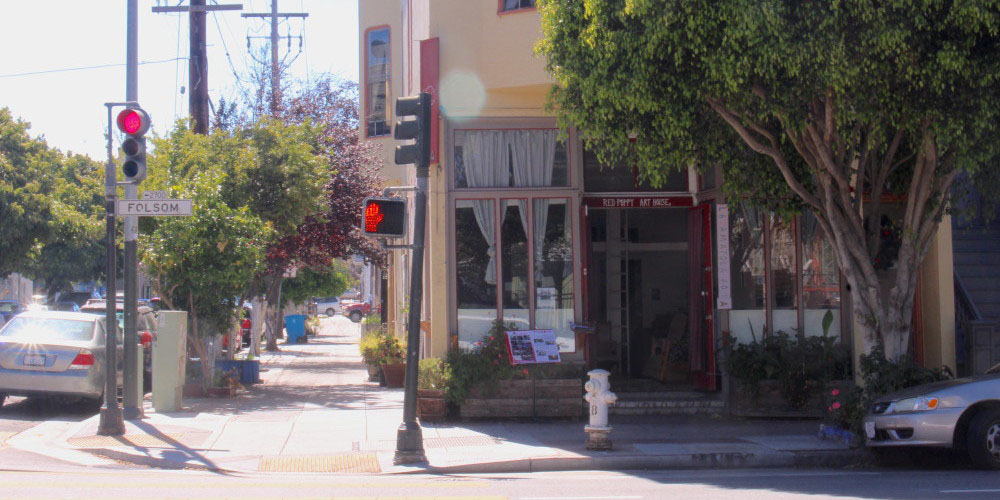
In February 2003, Alexander Allende and Todd Brown signed a lease on a big empty room on the corner of Folsom and 23rd that had one closet, a bathroom, and two layers of decades-old, wall-to-wall linoleum flooring. It was there that they co-founded an interdisciplinary artist space named “Porfilio Is-Mission Art House.” Armed with a couple of credit cards and basic carpentry skills, the two set out to work, tearing up the linoleum, power sanding the floor, and building interior structures. After two months of solid work and much help from friends, they forged a basic artist workspace and dance studio. By selling artwork and teaching weekly Argentine tango classes Alex and Todd were able to afford the rent. There was no business plan, not even a plan to create what could be called an “organization.” It was a work of art in the making, the future unknown and each step improvised between need and inspiration. Nonetheless, organization was at hand, and by the end of 2003 a small group of artists operating out of Porfilio Is staged the first “Mission Arts Party” (later to be named the Mission Arts & Performance Project: MAPP), a bimonthly community arts festival that continues until this day.
After a year of tireless work, Todd and Alex decided to dissolve their partnership. It was at that time that Todd had the opportunity to join forces with Mark Eisner, then a Visiting Scholar in Latin American Studies at Stanford, to form a yearlong partnership for 2004. Mark had just founded a non-profit arts organization called “Red Poppy” and at the time was creating a documentary on the Chilean poet Pablo Neruda, while having just finished a book of translations, “The Essential Neruda” (City Lights). Porfilio Is-Mission Art House joined Mark’s organization and was renamed the “Red Poppy Art House,” a name it has held ever since. Over the course of the year, the new Red Poppy was developing its then fledgling performance program with a weekly jazz night featuring composer Michelle Amador and her group, “The True Believers.” By the year’s end, both the MAPP and the Poppy’s performance program were taking off with growing momentum.
As the years went by, the Red Poppy Art House attracted ever-increasing participation from artists, cultural thinkers, volunteers, and community members, until it gradually evolved into the intercultural hub of artistic life and activity that it is today. Central among many artistic leaders that carried the Poppy forward was Meklit Hadero who joined Todd in 2006. Together, through a two-year dual-directorship model, they formalized the Poppy as a fiscally sponsored organization and sought out the first relationships with funders, such as the San Francisco Foundation, the William and Flora Hewlett Foundation, and the San Francisco Arts Commission, that made it possible for the Red Poppy Art House to continue.
The Red Poppy Art House’s realization is a story of artists taking an active role in reshaping the context in which the arts are explored and shared. While this short summary names only a few of the primary characters in the story, it cannot be overstated how many talented, passionate, and hardworking, artists, staff, and volunteers, were involved in making this space live and grow. In a society deeply conditioned to think in terms of product and marketability, the Red Poppy asserts the rightful place of all that is intangible in the arts, opening a space not entirely “public” nor “private,” but somewhere between; a space where creative moments are allowed to blossom unpredictably.